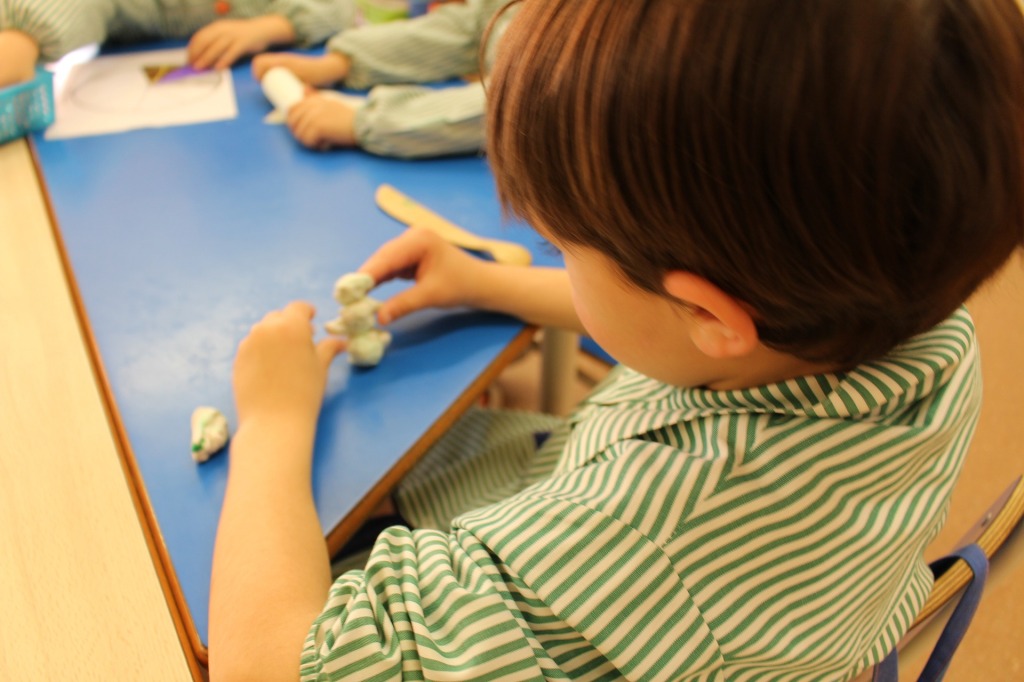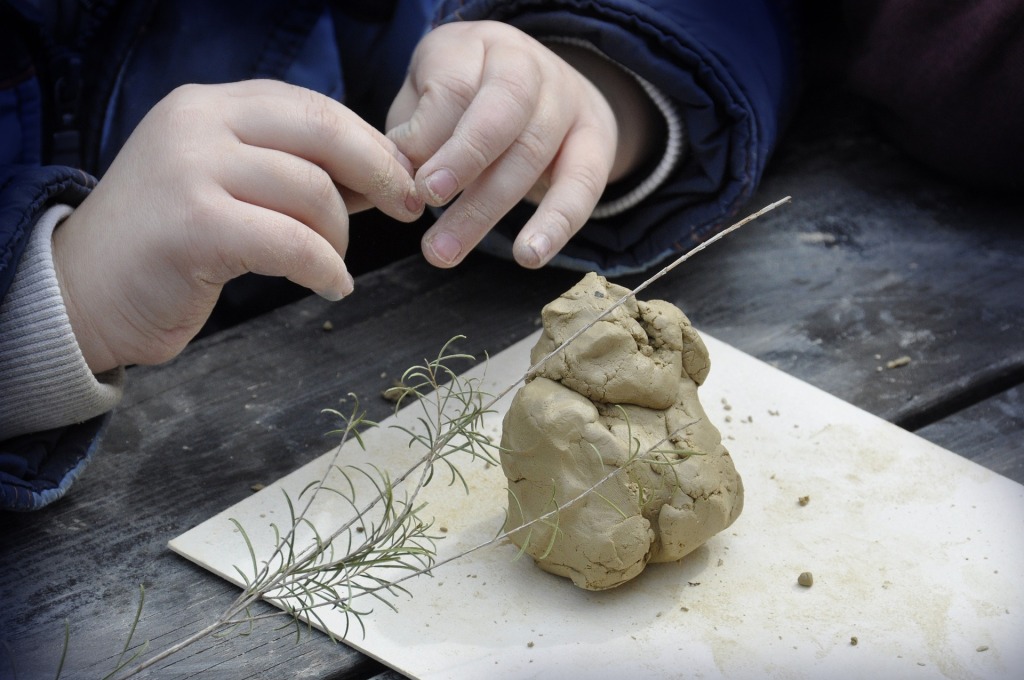
Modelling resources such as dough, clay and sand are widely recognised as a valuable resource to develop fine motor skills as well as foster creativity and sensory awareness in children across the world. More recently, there has been a drive to include clay in play-based environments. There has been a lot of research to suggest that clay is even more beneficial than other modelling resources. But why is clay so brilliant?

Using clay creates a multi-sensory experience. It provides opportunities to touch, see, smell and discuss what children are experiencing. Clay can take different states – wet and cold, or put into a kiln to make it solidify. Children may choose to create objects or just enjoy the sensory experience of moulding, shaping and manipulating clay. When used during play, children will develop communication skills as well as creative and imaginative skills.
Communication Skills
When using clay, children will often talk to one another or an adult. They may talk about the way clay feels and what they are doing with it. They will use a range of vocabulary, especially verbs and adjectives – pushing, pulling, squeezing, patting, poking, moulding, rolling, cold, wet, dry, grey etc. They have opportunities to respond to peer and adult questions such as ‘What does your clay feel like?’. ‘What are you learning to do?’, ‘What are you creating?’.

Coordination And Motor Skills
Using clay requires manipulation and hand/eye coordination. Children will need to use their hands and fingers to construct models and mould the clay into the shapes they require. Here, children practise their fine/gross motor skills and develop the muscles in their hands, which in turn helps with dexterity required to complete other tasks such as cutting and writing.
Emotional Regulation
Clay can be very therapeutic and calming for people as the cool, smooth texture and earthy scent of clay can be relaxing. Creating clay objects and models of their choice can be rewarding and this results in feelings of achievement and positivity, contributing towards improved mental health. Making time for regular play with clay may help children develop their emotional regulation skills and allow them time to relax.
Imagination And Creativity
The wonderful thing about clay is that including it within a play-based setting provides an open-ended activity which fosters creativity and curiosity. Children can create what they want, using their own methods and in their own time. They can use solely clay or can add in other resources such as straws, buttons and beads to add to their creation. Clay is so versatile and can be easily transferred to the outdoors where children can use sticks, leaves, branches and stones to create a partially transient piece of artwork. The use of clay supports a Froebellian approach: ‘as the play material becomes less tangible so there is a greater advance in creative expression’ (Froebel in Lilley 1967:113).


Attention Span And Problem Solving
Clay can help children develop their attention span. The adaptability of clay means that when working with it, children can make mistakes and correct them with less frustration and less desire to give up. The sensory experience means children may play for longer periods of time independently. As with any design activity, there will be opportunities for children to problem solve using clay. Another brilliant clay is its malleability – a snag in the design of a model can easily be solved by the child without adult intervention.
Self-Esteem
As we already know, clay can be therapeutic and calming for many people. There are no limits when using clay and children can create something imaginative or just experience clay without adult involvement, resulting in feelings of accomplishment and pride. Working independently is a great self-esteem booster. The child is in control and is not reliant on an adult to guide them.
Stella Brown, a nursery head teacher in Edinburgh, stresses the importance of ‘ensuring that the child is at the centre and leading the curriculum rather than the curriculum leading the child’.

Tips For Learning Facilitators
- Avoid making suggestions, just observe what the child is doing so you know what interests the child. This will allow you to extend and support their experience.
- Provide cutters and a range of natural and collage materials within reach – beads, pebbles, lolly sticks, straws, sticks etc.
- Provide some visuals for children who are not familiar with using clay yet, such as these:
Clay Modelling Ideas & Techniques | Primary Resources (twinkl.co.uk)
Clay Techniques to Try Display Posters (teacher made) (twinkl.co.uk)
